Cornwall Ontario – This news-story photo of a coyote, cozily curled up on the seat of a commuter train, is both compelling and concerning.
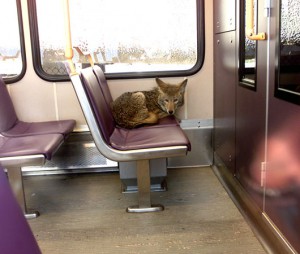 On one hand, it hints at the remarkable intelligence and adaptability that has ensured the species’ survival over evolutionary time. But it should also make us stop in our tracks and think about what scientists and compassionate realists are asking us to consider today. And that is, in essence:
On one hand, it hints at the remarkable intelligence and adaptability that has ensured the species’ survival over evolutionary time. But it should also make us stop in our tracks and think about what scientists and compassionate realists are asking us to consider today. And that is, in essence:
What is our 21st century responsibility to the coyote and how do we respect these sentient beings that have been persecuted for so long yet increasingly live among us?
If you stop and think about it, since the time European settlers arrived in North America, the case of the coyote seems counterintuitive.
Originally native to the American southwest and revered by First Nations, the coyote (unlike the wolf or mountain lion) has actually thrived in the face of white man’s encroachment; successfully expanding its range to every corner of the continent save the most inhospitable reaches of Canada. It’s testament to the species’ resiliency. And though the coyote has suffered fear and loathing, nothing, it seems – from our firearms, factories, poisons, pollution, pavement or urban sprawl – can keep the coyote at bay.
Yet sadly, it may be a victim of its own success. So many are asking:
Why continue the persecution?
Science has demonstrated (among other things) that killing coyotes can actually result in females having larger litters. So we are asked to consider ways we can “respectfully coexist”. And respectful coexistence is the theme served up by seven local artists, as well as representatives of both Coyote Watch Canada and The Fur Bearers Defenders in a two-pronged approach to public education they’re calling The Primer and The Presentation.
For The Primer, artists will be exhibiting their works at The Grind Café on Second St. from Jan. 9 to the 23rd.
Then, on the evening of the 23rd wildlife consultant Lesley Sampson of Coyote Watch will lead a science-based presentation (beginning at 7 p.m.) at Viscount Alexander Public School. Ms. Sampson was invited by the City of Cornwall to lend her expertise.
The Presentation is open and free to anyone who wishes to learn more about what each of us can do to live in harmony with urban and rural coyote families.
Below are some of the featured artworks that will be on display at The Grind.
***
Acrylic on canvas (below) titled: Coyote Connections. By Jacqueline Milner who says:
“I took inspiration from a quote by Chief Seattle: ‘All things are connected. Whatever befalls the earth befalls the sons of the earth. Man did not weave the web of life, he is merely a strand in it. Whatever he does to the web, he does to himself.'”
Mixed Media on canvas (below). By Tracy & Calian Coxall-Davies
Functional Piece (below). By Carmen Masson
I am sickened by the needless killing of coyotes almost as a sport. It is (we) who need to coexist with them and not expect them to move out of our way. I have chosen recycled materials such as wire, paper and boxes to build my sculpture. It would certainly be easier in many ways to use new materials or clay but (I say) why not use what would otherwise become useless landfill. Also paper mâché has it’s own challenges in manipulating the forms because it is less flexible and forgiving than clay is and for an artist the challenge is everything.
Portrait on canvas (below). By Dan Burgess
Framed photograph (below). By Diane Picard
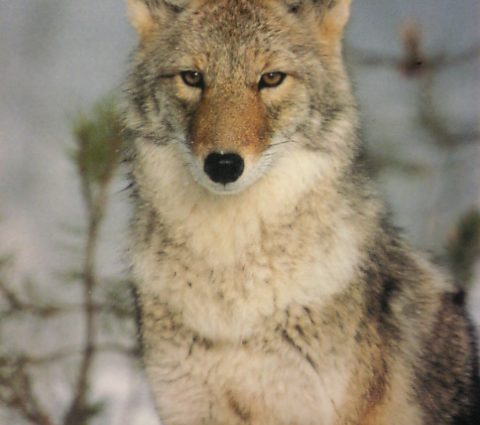
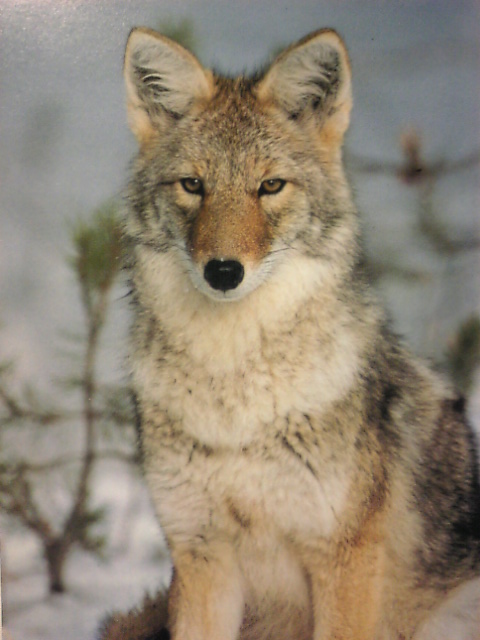
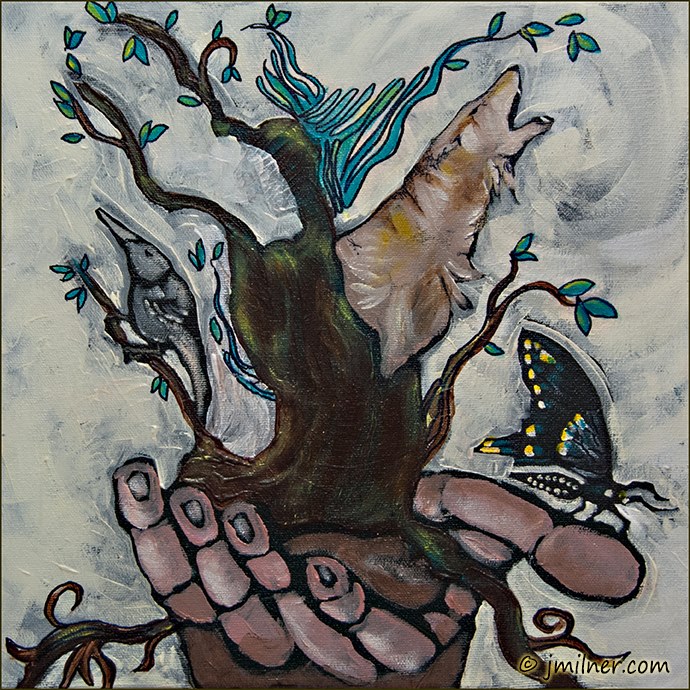
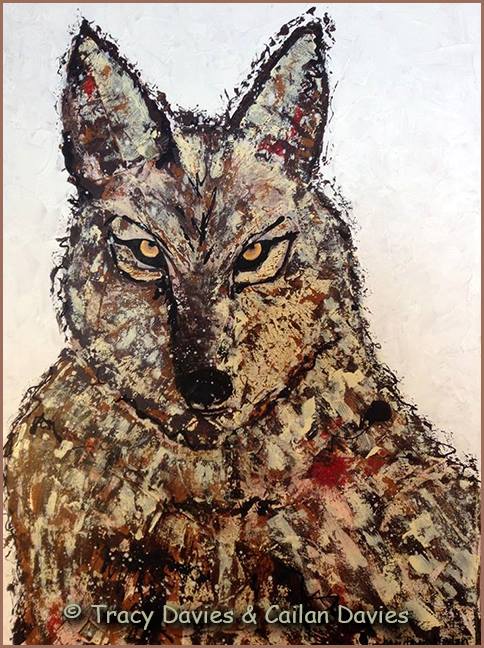
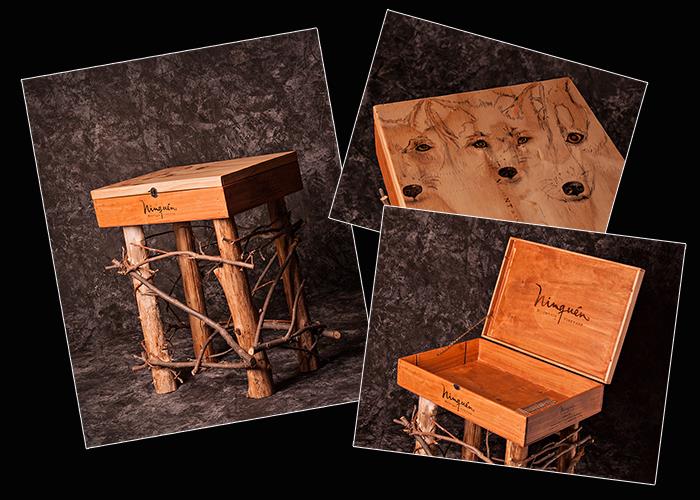
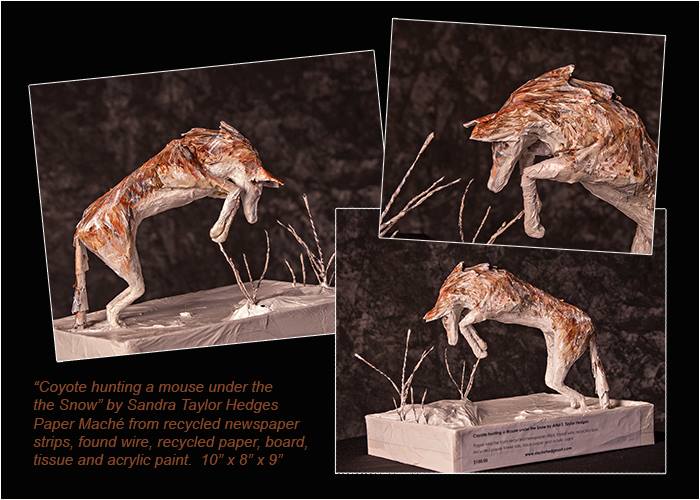



My trapper and hunter pals do not agree. Coyote’s are viscious, wasteful predators and should be shot.
Thank you for your interest and heart in sharing this story Maryanne.
Without prejudice to hunters…from the literature
Research suggests that when aggressively controlled, coyotes can increase their reproductive rate by breeding at an earlier age and having larger litters, with a higher survival rate among young. This allows coyote populations to quickly bounce back, even when as much as 70 percent of their numbers are removed.
It is nearly impossible to completely eradicate coyotes from an area. Despite bounties and large-scale efforts to kill coyotes over the last 100 years, coyotes have in fact expanded their range throughout the U.S. and Canada tremendously. One study even found that killing 75 percent of a coyote population every year for 50 years would still not exterminate the population.
@420 I hope you and your trapper and hunter pals will make it to the presentation and discussion on the 23rd. I think you can lend much to the discussion.
The cayotes look very beautiful in the picture but if you ever came across them personally that is another thing. My husband and I have seen them up close at Guindon Park some years ago when we would walk there in Cornwall and we came up to one about 50 feet and then it went into the woods. We have spotted foxes in a drainage pipe (babies) as well as a fox walking on the ice of Lake St. Lawrence in Long Sault. That fox walking across the ice would have made a very nice picture to take but we didn’t have our cameras with us at the time. Here in Ottawa we have only come across a few deer a couple of times but the lady in charge of the park has seen them a number of times. The most animals that we see are squirrels and birds along with a few racoons, and a few other burying animals. The park is very clean and a lot of brush is taken out so the park is inside the city and not all that much wildlife.
@jules… just want to clarify your comment…. so when you came across the coyote at Guindon Park the coyote just went in the woods? Did anything happen that gave you cause for concern?
I live in the sticks and have lots of coyotes living on my property (about 300 acres). These animals are amazingly elusive and disappear quickly into the bush whenever I spot one. About ten years ago we lost a few chickens to what I thought was a coyote, but could have been a fox. The other thing to consider is that coyotes eat a lot of rodents. I like coyotes way more than rats.
Hi Jacqueline yes I was concerned because I am a city woman and not used to the wild creatures on how they would react. I love animals so very much but you cannot tell what they will do to you. I have a funny thing to tell you and all land that is one time there was a big mound of dirt at Guindon Park and I thought that it was some sort of a wild animal from far and honest to God this is all true that it took me two weeks before going back and kept seeing that mound not moving and the joke was on me. LOL LOL. This is a completely true story and stupid of me but this sure did happen.
I am one of those compassionate realists.:)
As much as I like to agree that there are times when you do have to defend yourself against wild animals. It is still a sad thing to have to do.
Compassion means nothing unless we lower our guns, take our fingers of the trigger, and realize that we do have a choice to let our animal friends show their beauty.
Thank you Marry Anne
People who live just outside of Ottawa like Greely and other rural areas do have coyotes on their properties and do not let their pets loose outside nor on a chain for fear of the coyotes. I agree with Furtz about the coyotes who keep the rat population down and he lives in a rural area where there are no city services of sewers and for water like what we have in cities and in a way relies on other creatures to help keep the rat population down. We had friends who lived outside of Cornwall and told us about the problem with rats and mice and that their cats would catch the mice and rats and brought them in to the people like you would bring in a gift. I went YUCK and they do get into the house as well. Living in a rural area has its good and bad points. The good point is being quiet most times and the bad point has to do with the wild creatures that invade your property. Coyotes are pretty to look at but you do fear them and it is natural.